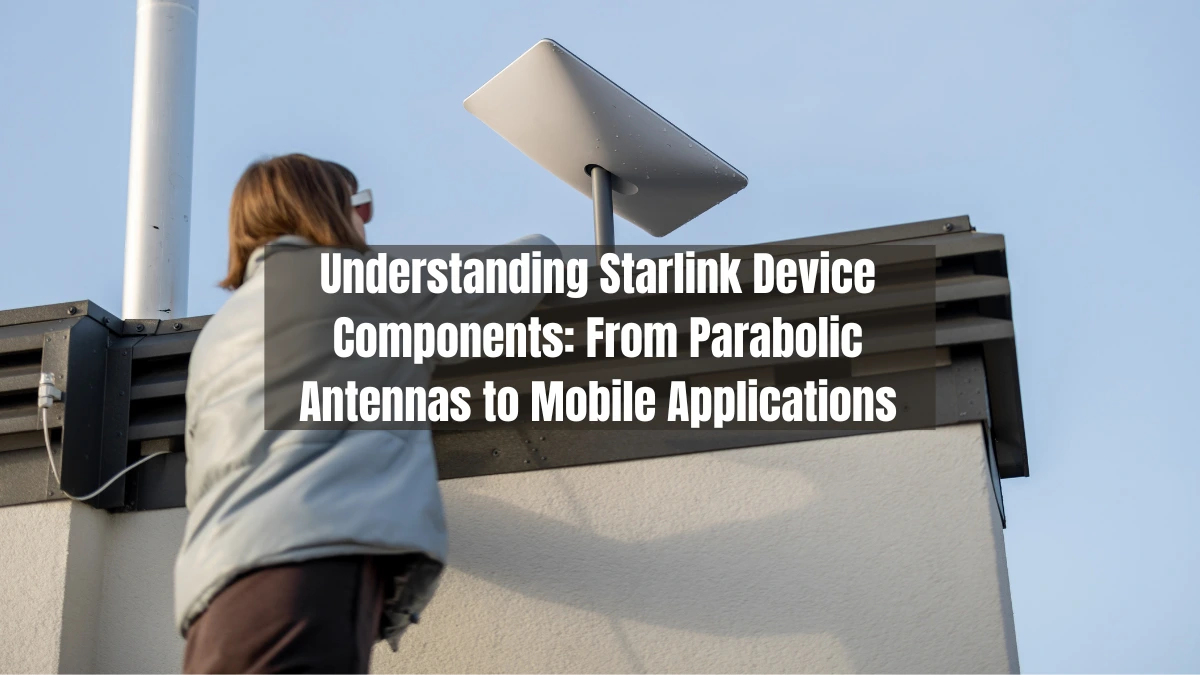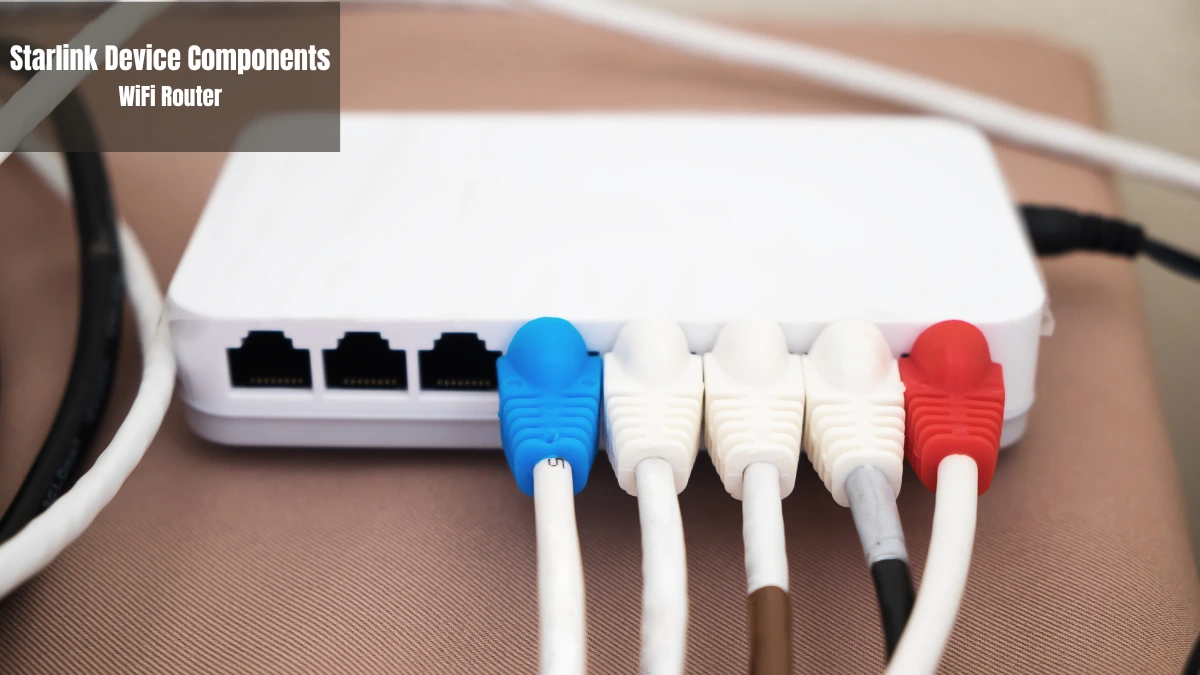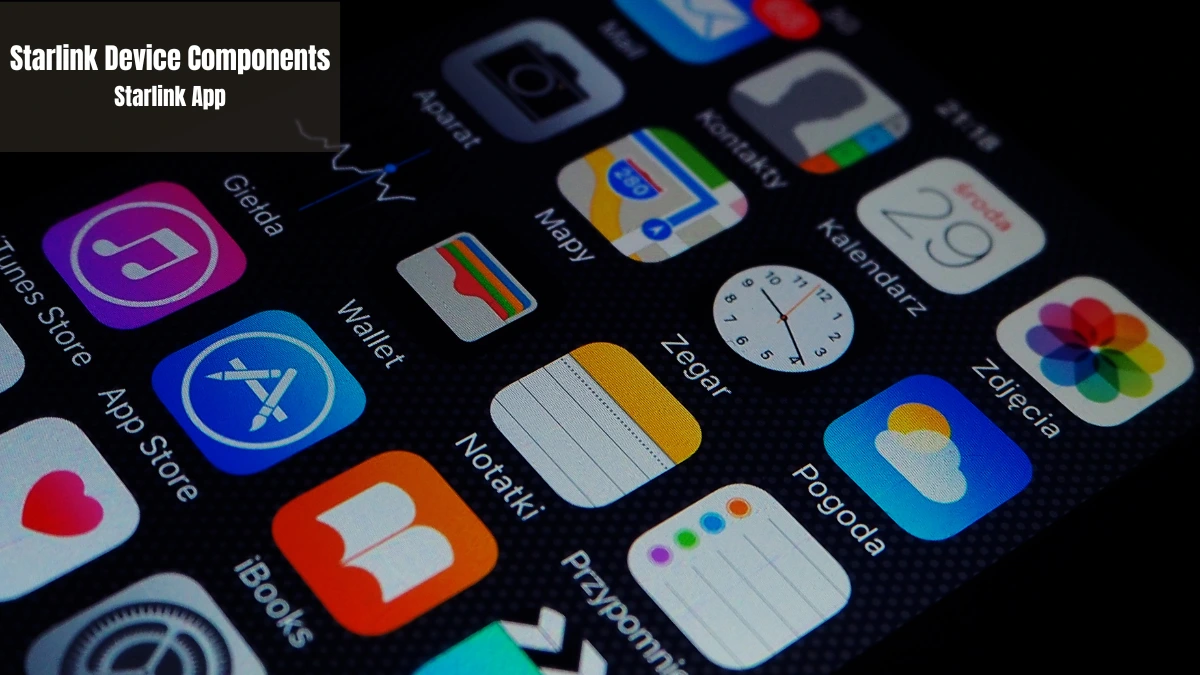Starlink is becoming an increasingly popular device to install in remote areas that cannot be reached by fiber optic networks. This SpaceX device is known for being simple and easy to install yourself. However, in order to do so, it is important to first understand the Starlink device components.
The purpose of the Starlink device components is to capture signals from satellites. These components consist of a parabolic antenna (dish), a WiFi router, cables, a power supply, and the Starlink application. Each component has its own specific function.
Therefore, it is important to know what Starlink device components you will receive when subscribing to SpaceX's internet connection.
Starlink Device Components

Parabolic antenna (dish)
The parabolic antenna (dish) is the most important component of the Starlink device. Its function is to capture signals from Low Earth Orbit (LEO) satellites. The captured signals are then forwarded to the router as an internet connection.
This Starlink device component can automatically move to follow satellites orbiting in the sky. In addition, this component is also resistant to extreme weather conditions such as heat, rain, and strong winds. What is special about this component is its internal heater that can melt snow.
You need to install this component in an open area, such as on the roof or yard of your house. Make sure that the installation is not obstructed by trees or tall buildings to maximize signal reception performance.
WiFi Router

A WiFi router is a component that distributes internet connections to devices such as cell phones, laptops, TVs, or smart home systems. This capability comes from signals distributed by antennas that capture satellite signals.
This Starlink device component typically supports dual-band WiFi (2.4 GHz and 5 GHz) with a minimalist and modern design. Not only that, the router can be controlled directly through an app to check the signal and update the firmware.
For wider signal coverage, you can add a mesh node. This may be necessary for those of you who have large homes in order to distribute the signal throughout the entire house.
Cables and power supply
Cables and power supply are components that cannot be overlooked. Every Starlink package purchase usually comes with a data cable from the dish to the router, approximately 15-30 meters long.
In addition, you will receive a power adapter to turn on the router and antenna. For certain regions and subscription types, you will also receive additional cables or a mounting kit.
One thing to note about these cables is where they are installed. Make sure the cables are neatly arranged so they don't get in the way. It is also important to ensure the cables are protected from potential damage due to weather or animal bites.
Starlink App

The Starlink app is the final component that supports the operation of SpaceX's internet infrastructure. The mobile app is available for iOS and Android, allowing you to find the best position for installing the dish, check signal strength, and see the number of connected devices.
Additionally, you can reset or reboot the system through the app if necessary. For those who prefer not to deal with technical details, the user-friendly app will be a great help.
Additional equipment
Although called additional equipment, it is not always necessary. However, if the location and building conditions require additional equipment, you can use these components:
- Mounting kit: Can be used on walls or roofs for a more secure installation.
- Portable mounting pole: For installation on the ground.
- Extension cable: If the distance from the dish to the router is longer than the cable provided.
- Ethernet adapter: For LAN connection to certain devices.
Those are the Starlink device components you need to know if you want to install SpaceX's internet network. It looks more compact, automatic, and can be installed by yourself, right? Yes, those are the advantages of this device.
Each generation of Starlink may not have significantly different components. The devices are designed to be easy to use by anyone, without having to understand network technology. This will certainly help you install it yourself at your location. Are you ready for easy internet with high speed, stability, and low latency?